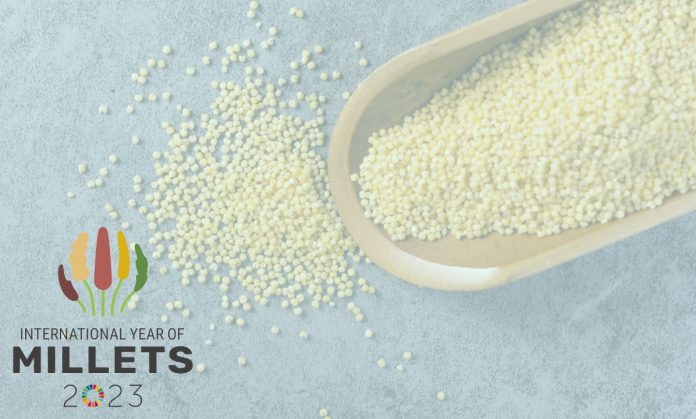The year 2023 has been declared by the United Nations as the International Year of Millets, initially proposed by India in hopes of positioning itself as a global hub for millets. Millets have been an integral part of the Indian diet for centuries. In addition to numerous health benefits, millets are also good for the environment with low water & input requirement. With the aim to create awareness and increase the production & consumption of the millet, the UN followed India’s proposal for the same.
So, what are millets? Millets are cereal, like rice or wheat, but used to be referred to as coarse cereals, an obvious reference to the external texture which is not smooth. All cereals are a rich source of carbohydrates but millets also come with more protein, dietary fibre, iron and calcium content than rice or wheat.
In a 2018 notification, the government said millets are a powerhouse of nutrients and that research had shown millets as a good defence in the fight against diabetes. Millets have a low glycemic index, which means such foods have a lesser impact on blood glucose levels than foods that are higher up in the index. To help consumers understand the benefits better, the government has changed the nomenclature from coarse grains to Nutri cereals.
Millets are even considered to be climate-friendly as they use 70% less water than rice; grow in half the time as wheat; and need 40% less energy in processing. They are hardy crops that can withstand extreme heat conditions.
If millets are so beneficial for us, why did they lose preference in the past few decades? Well, millets are said to be among the earliest, if not actually the first, cereals to have been cultivated by mankind. In a few years following independence, India was hit with a food shortage and we had to quickly get our act together. The Green Revolution prioritised the production of wheat and rice helping avert such crises. In fact, the production of rice and millets were higher than the production of wheat, barley, and maize combined altogether. However, over the years, the millet became a mere fodder crop after the Green Revolution. It was evident that the precedence that was given to rice and wheat meant the millets declined in production.
Although, this serves as a great opportunity for start-ups to look into millets. Can start-ups be far behind if a business is ripe for the taking? There are several areas that offer opportunities. Of course, demand is something entrepreneurs would have to review for their offering before setting off on a journey. The government has funded 66 start-ups with investments exceeding a cumulative ₹6 crore. We’ve seen what policy and technological innovations have done to make rice and wheat go up in terms of production and consumption, and if the government implements their policies well, the same could also work for millets.
The government has taken a great initiative to inform and educate the country on millets and has a dedicated website for the same. If you wish to read more about the International Year of Millets, and all the activities that are being hosted by the government for its commemoration, you can read more at https://www.mygov.in/campaigns/millets/.































